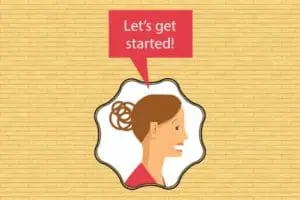Raquel Maya Carson is a DQC teacher fellow. This is the first in a series of blog posts that will examine education data use in the classroom.
I am an advocate and lover of education data in the classroom. In fact, this message resonates with many teachers at my school and is a part of our school culture. Measuring student growth, setting individual learning goals, and sharing information with families is a passion of mine.
As a teacher, I am aware of and embrace the value data-driven instruction has for our students. In a simple explanation, data-driven instruction is using student data and work to plan, modify, and differentiate your lessons. The type of data that we use isn’t always just how a student performs at a task; we also take into account data from class checks for understanding as a lesson progresses. (DQC developed Ms. Bullen’s Data-Rich Year, a helpful infographic that explains how education data are used as part of data-driven instruction by a teacher.)
However, I still have questions and struggles surrounding education data that fall into a few buckets—collecting, organizing, training, collaborating, planning time, and communicating. Today I’ll explore my thoughts on the role data play in the first two—collecting and organizing.
Collecting: What kind of data should I gather as a teacher? For instance, in my first year teaching I quickly realized that individual homework assignment grades didn’t tell as meaningful of a story as simply keeping track of homework completion. Homework completion allowed me to see which students I needed to provide differentiated homework to, which families I could offer after school help to, and which families could use more evening phone calls and text-message check-ins. I really wanted to know more about how I could modify what I was doing to better support students and families in completing home learning activities. I didn’t need to grade every single assignment, it was more about the students taking home and sharing what was learned at school in a way that gave them some additional time to practice. As a teacher, my colleagues and I need training and real-time experience to help us best understand what information is most useful. We need to be able to think through what areas we want to improve in order to identify what data would be most effective to collect.
Organizing: How can I streamline and organize the data that my school and I keep on a student, so that it can be easily presented to other staff? For schools to have a full picture of a student’s performance and how to best support them, we need to be able to share data with more than just teachers. Appropriate data should be shared with counselors, psychologists, administrators, special education teachers, and social workers.
This helps them identify trends in performance and attendance, modify instruction, identify family engagement strategies and outreach, and know where the students may need more support.
Furthermore, these data are more powerful if collected and organized over a students’ time at a school. Allowing for other teachers and staff that may interact with a student to add to the aforementioned data allows a school to better support the needs of the individual.
Stay tuned for upcoming blog posts in this series, where I’ll explore the role data play in training, collaborating, planning time, and communicating!


